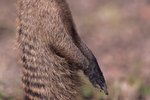
Owls, thanks to their prowess as predators, are rarely prey for other animals; after all, most creatures can’t compete with an owl’s silent flight and powerful talons. Baby owls (called owlets) are vulnerable, since they lack the size and strength of their full-grown brethren. The adult owl, however, is not wholly immune from attack. While owls might not often be prey, they can be harmed by some animals, including other owls.
Foxes and Prowling Cats
Although owls watch over their young closely, they can’t always keep them from harm’s way, especially since they must leave their owlets to hunt. Foxes and prowling cats, such as bobcats, have been known to take advantage of an unguarded nest to consume owlets. These predators must be stealthy when approaching an owl’s nest; adult owls can easily harm or kill four-footed attackers and will not hesitate to do so when protecting their young.
Birds of Prey
Owls are formidable birds of prey, but that doesn’t mean other strong birds of prey always leave owls alone. Eagles and hawks have been observed attacking owls, but they usually aren’t looking for food. The birds may be involved, instead, in a territorial dispute. Disputes are not common, though, between other birds of prey and the large owl species. Thanks to large owls’ strength, eagles and hawks will often seek other hunting grounds rather than fight.
Owls
In the West, owls are often seen as wise, peaceful creatures, but many owl species are extremely territorial -- they will do whatever it takes to protect their territory and their nests, including fighting other owls. Territorial owl species, such as the snowy owl and the great horned owl, have been known to injure and even kill other owls. Owls don’t engage in this behavior for the sake of eating another bird. Food, however, is a large part of the motivation behind their actions. Too many owls in one territory means less food for all.
Humans
Perhaps one of the largest dangers to owls are two-legged mammals. While humans don’t prey on owls for food, they do cause damage to owls’ habitats. As human populations expand and urban areas become larger, owls lose precious hunting and nesting grounds. With grounds disappearing, owls must compete against each other for fewer resources. Automobiles, too, are a danger to owls. When they hunt and land along a roadway, they risk being hit and killed by cars.
References
Photo Credits
-
NA/AbleStock.com/Getty Images
Writer Bio
Melissa Harr is a writer and knitting pattern designer with a range of publication credits. Her latest work includes blogging for Smudge Yarns, judging fiction for Ink & Insights 2015 and creating patterns for I Like Knitting magazine. Harr holds a Bachelor of Arts in English from the University of Illinois at Chicago and a CELTA.




